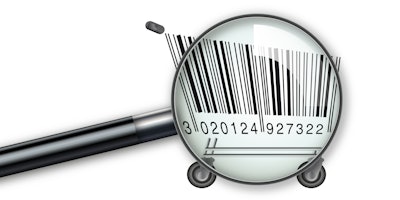
With most restaurants closed or at severely limited capacity in 2020, Americans got cooking; in fact, there was a 29% increase in grocery shopping. This forced a reinvestment in home kitchens and put significant strains on food manufacturers, distributors, retailers and customers. Collectively, everyone is now more conscious grocery shoppers.
Stickers, labeling and the regulating bodies they represent have helped improve transparency, but most still don’t know the origin of their food. New technologies offer an opportunity to shine a light on all links in the food supply chain.
Consumers are bombarded with product choices and decisions daily. How many product policies do we sign without reading? How much do consumers research before deciding to buy a brand of cheese? Refreshingly, the answer is more and more. That added visibility may seem daunting to businesses, particularly those in the food sector. But, it doesn’t have to be a nightmare to build that visibility. First, let’s look at customers’ relationships with food.
Consumers’ emotional, social bonds to food
Food is a necessity; it is also a constant choice for consumers inundated with hundreds of options every time they step into a store. Remember the adage, you are what you eat, and no one wants to be labeled unethical. The higher the cost of items, the bigger emotional and financial investment it is for the consumer.
Grocery costs continue to rise with inflation at a rate between 2-3.5% on average, with the pandemic continuing to cause a rapid rise.
Last year, most American families were tightening their budgets, yet the demand for ethically sourced food increased by 14%. So, food may be a matter of life and death, but emotional decisions continue to drive purchases even in hard times.
The first time people go to a new grocery store, they make decisions based on logic and immediate need. The next time they go to a store, they decide based on two elements -- reason and emotion. If given a choice between two packages of yogurt, identical except one has a sticker that says “sustainably sourced,” odds are customers are going with the sustainable option. The social choices of the companies will continue to play a more prominent role in their success in the marketplace.
How does technology enable accountability?
Technology has changed the way individuals connect with brands. Social media has become a secondary customer support line for people to voice complaints or sing their praises, but that connection hasn’t translated into trust for the customer.
Accountability is a chain. It connects customers to brands and brands to their suppliers. How does that impact sales? Brands that cannot validate claims lose credibility in the marketplace. Current technologies, including Internet of Things (IoT) devices and RFID tags, have enabled the first part of this chain. How do companies build the following link, the one that connects their consumers with the brand?
Barcodes have long been used to track items, but they could be used to tell consumers more. With updated barcodes, customers could use their smartphones to look up where the product was sourced, when it was sourced, product safety information, safe handling instructions, how it was transported and how it should be disposed of. Beyond logistics, bar codes could also share performance content (content that will encourage them to purchase).
It also significantly benefits retailers; with brands connecting directly to consumers and vice versa, customers can share experiences and feedback with the company, not the middleman. Technology will be the catalyst that raises the standards of the food industry.
Traceability is the new standard
Food producers have come a long way from simple logos and mascots. The market demanded more information and nutritional information on the labels. The market demanded health and safety information, and it appeared on the box. Now, traceability from that company’s suppliers will be the new standard.
Now that the technology is here, people can demand more visibility from the brands they trust. If a top chocolate company starts to provide sourcing information through the barcodes on a product, customers who make ethically driven purchasing decisions will most likely begin to gravitate toward that brand rather than their competitor’s, even if they source from the same place. Over time, more chocolate producers will start to include sourcing information. Industry and federal regulations do cause change, but customers’ dollars always provide the quickest change.
Traceability doesn’t have to be a burden for producers either. With this technology comes the ability to gamify certification for producers; brands and producers can earn incentives and distinction while acquiring certifications like organic and non-GMO according to regulation standards.
New traceability features and links provide shoppers with added insight into their favorite brands, instill trust and offer companies and marketers another channel to share the brand’s story.



















